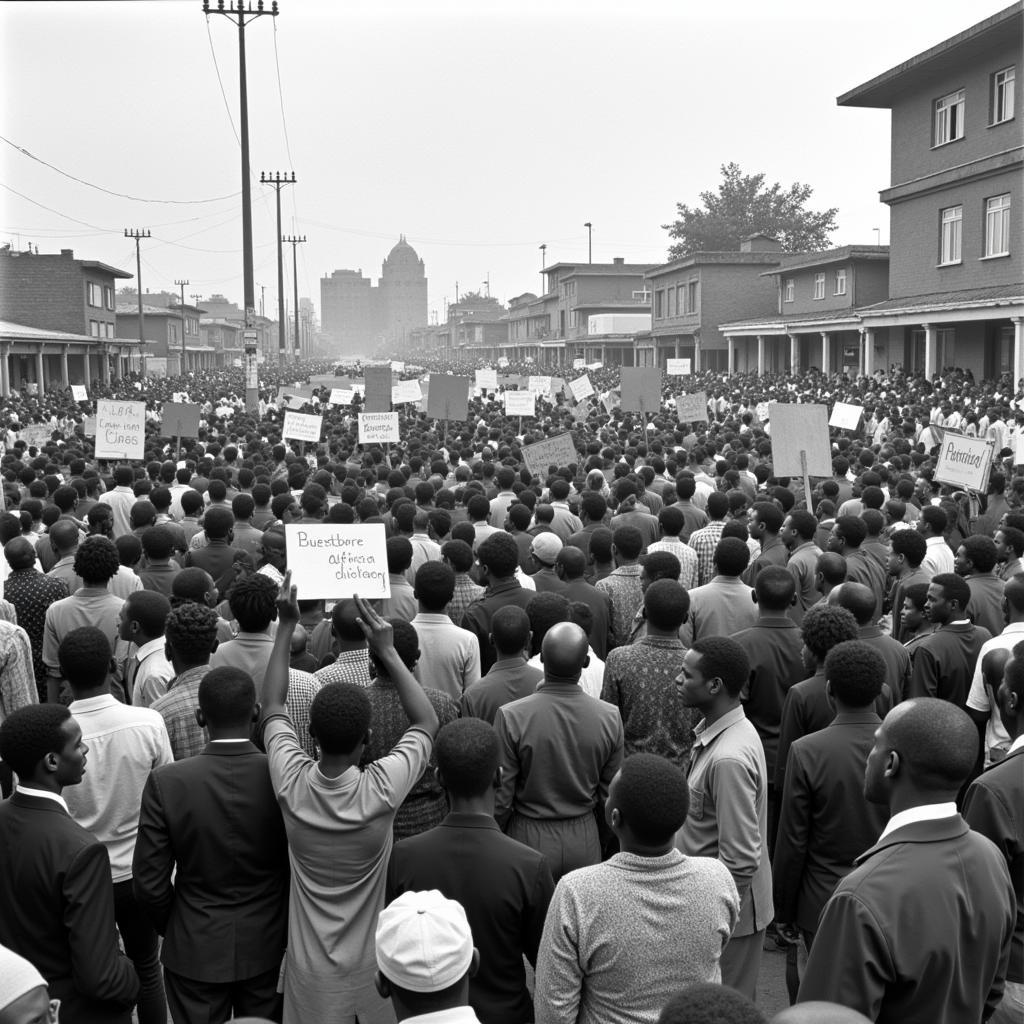African American Migration to Minnesota: A Rich History
African American Migration To Minnesota began in the mid-19th century, although it was considerably smaller than the Great Migration to northern industrial centers like Chicago and Detroit. This journey, spanning over a century, has woven a unique thread into the cultural tapestry of the state. From seeking economic opportunity to escaping racial persecution in the South, African Americans have contributed significantly to Minnesota’s social, political, and economic landscape.
Early Arrivals and Settlers
The earliest documented African American settlers arrived in Minnesota in the 1800s, many as fur traders or working alongside explorers. These pioneers laid the groundwork for future generations, establishing small communities and navigating a complex social environment. Despite facing discrimination and limited opportunities, these early arrivals persevered, creating spaces for themselves and their families.
Overcoming Challenges in a New Land
Life for these early settlers was fraught with challenges. They encountered prejudice in housing, employment, and social life. Access to education and other essential services was often restricted. Despite these hurdles, they established churches, businesses, and community organizations, demonstrating resilience and a determination to build a better life.
The Great Migration’s Impact on Minnesota
While Minnesota wasn’t a primary destination during the Great Migration, it still experienced a noticeable influx of African Americans between the 1910s and 1970s. These migrants were primarily drawn by job opportunities in the burgeoning industrial sector, particularly in cities like Minneapolis and St. Paul. They sought refuge from the Jim Crow South and hoped for a better future for their children.
A New Wave of Opportunities and Challenges
The influx of African Americans during the Great Migration transformed Minnesota’s demographics and cultural landscape. New communities emerged, bringing with them rich traditions, music, and culinary influences. However, this period also witnessed increased racial tensions and discrimination, leading to social and political activism.
Building Community and Fighting for Equality
Facing systemic racism, African Americans in Minnesota organized and mobilized. They established social and political organizations to advocate for their rights and build stronger communities. These organizations played a crucial role in fighting for fair housing, equal employment opportunities, and access to education. This period saw the rise of prominent African American leaders who championed civil rights and social justice.
The Legacy of Activism and Resilience
The struggle for equality in Minnesota resulted in significant legal and social victories. These achievements paved the way for greater inclusion and opportunity for future generations. The legacy of activism and resilience continues to shape Minnesota’s commitment to social justice and equity.
African American Culture in Minnesota Today
Today, Minnesota boasts a vibrant African American community that continues to enrich the state’s cultural landscape. From art and music to cuisine and literature, African American influences are deeply embedded in Minnesota’s identity. Numerous institutions and organizations celebrate and preserve this rich heritage, ensuring its continuation for generations to come.
African American migration to Minnesota is a story of perseverance, resilience, and the pursuit of a better life. It’s a story of challenges overcome and triumphs achieved, shaping the state into the diverse and dynamic place it is today. By understanding this history, we can better appreciate the contributions of African Americans and work towards a more equitable future for all.
FAQ
- When did the first African Americans arrive in Minnesota? The earliest documented African American settlers arrived in Minnesota in the 1800s.
- Why did African Americans migrate to Minnesota during the Great Migration? They were primarily drawn by job opportunities and sought refuge from the Jim Crow South.
- What challenges did African Americans face in Minnesota? They encountered discrimination in housing, employment, and access to essential services.
- How did African Americans organize and fight for their rights in Minnesota? They established social and political organizations to advocate for equality and social justice.
- What is the legacy of African American migration in Minnesota? It is a story of resilience, perseverance, and contributions to the state’s social, political, and economic landscape.
- What are some resources for learning more about African American history in Minnesota? The Minnesota Historical Society and the African American Registry are excellent resources.
- How can I get involved in supporting the African American community in Minnesota? Consider supporting local organizations that promote social justice and equality.
If you need further assistance, please contact us at Phone: +255768904061, Email: [email protected] or visit our office at Mbarali DC Mawindi, Kangaga, Tanzania. We have a 24/7 customer service team available to assist you.


